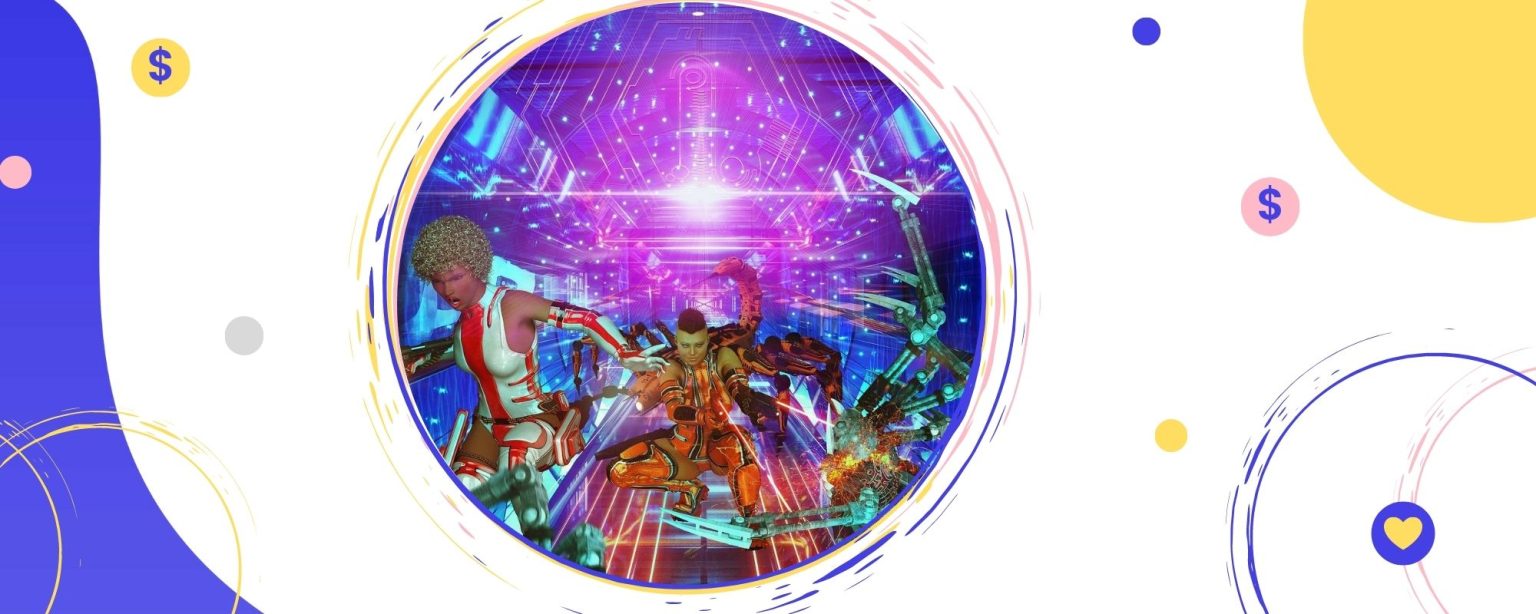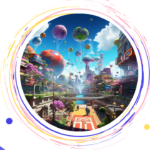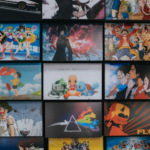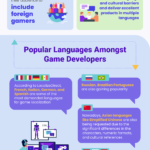Thanks to the internet and video game localization, the world of video games has exceeded geographical and linguistic boundaries for a long while ago. In the latest 25 years, writers and game developers took the advantage of globalization, many of them building true empires by making their games accessible to an international audience.
With 2.7 billion users from all over the world in 2019, the video games market is worth $152.1 billion. In 2020 the video gaming industry had an increase of 9.3% compared with the previous year, reaching $159.3 billion and is predicted to be worth $200 billion by the end of 2023.

Even if this market has a continuing growth, the video gamers are an extremely sophisticated and complex audience, with a mindset different from an average customer, very specific tastes, and cultural behavior. In this industry, even the slightest mistake can lead to a serious drop in sales.
Therefore, video game localization is a tricky process and not very easy if you want to get the best results. Having an effective localization strategy and specialists that understand your audience and provide you with the right translation and localization services is a must.
In this article, we’ll explain to you what localizing games means, what steps it entails, and why it is so important for our modern gaming experience.
What is video game localization?
The process of localization includes more than simply translating the text within your game. Essentially, it involves a deep dive into the culture of your target market and significant creative efforts to produce a game that is comprehensible, engaging, emotionally resonant, and commercially viable.
Managing the translation and localization of all elements involved by a game – from character dialogue, cutscenes, and in-game texts like item names and quest descriptions to UI elements and the code of the game itself – will require proper systems and procedures to ensure that the content is translated to the highest possible quality while remaining consistent and true to the game.
So, let’s break this down step by step.
Run a content analysis and plan your localization project
Game localization is neither simple and nor quick. This is a step that can make or break your game, so the best solution is to allow enough time to carefully plan your project.
First and foremost, you should run a content analysis that will provide you with accurate information about:
- who will be the target audience for localization
- the translation needs – establish precisely what elements of the game needs to be translated and localized.
- if changes to the text and visuals will be required outside of the in-game dialogue and instructions (for example, in-game outdoor and indoor signage or street signs)
- whether you’ll do all the work inhouse or you will hire a professional translation and localization agency
Depending on the information obtained, you’ll be able to set all the resources you need for the project, from voiceover artists and designers to staff and budget.
Select your translation and localization company
If you decide to hire a professional translation and localization agency, now it’s time to select the company you want to hire. Make sure you grill them about their experience with translation and game localization and the languages they use for this. Both the linguistic and localization expertise are important, so you’ll want to make sure you hire an agency that excels in both areas.
But if you have inside the house native speakers of the targeted language, you will want to translate and localize the game yourself. If so, you have to assemble your own team and for this, you’ll need people who speak two languages (the language to want to localize in and the communication language of the company) fluently, have a deep understanding of the targeted culture(s), are tech-savvy and can use a translation management system (TMS).
Each option comes with its own pros and cons, but in the end, it’s up to you to find the best solution starting from the data you have.
Develop a localization kit
Whether you hire an agency or undertake in-house your game localization, this is a very important step for the final localization outcome.
A localization kit – or simply, lockit – is a package of data that works as a complete guide for your translators and localization team. This is where you have to provide all the information related to your game – from the backstory and characters that dictate a specific terminology – to more abstract information like theme and tone. The more comprehensive lockit is, the smoother and more accurate the translation and localization will be.
Extract strings into a Translation Management Software (TMS)
Your video game can’t be translated and localized if it’s not created for this. That’s why, at this stage, you’ll need to produce the resource files with translatable content, by extracting the strings from your game and importing them into a translation management software (TMS).
This is specialized software used in the translation and localization industry that facilitates the cooperation between the different teams that work on your project. As there are different best practices for different operating systems, your localization team will guide you very carefully.
This way your localization team or agency can address any technical issue related to your video game localization and set the stage for the translation itself.
Translate your content and non-text-based elements
This is where the translation itself of the content and non-text elements will happen and now you can see the benefits of paying the proper attention to all the steps above.
The linguists’ team will use the lockit you created and other context provided, to translate the text. A bad translation can make or break the player’s immersion in the game. And maybe we wouldn’t talk today about high-quality translation and localization if it weren’t the infamous “All your base are belong to us” – a huge mistake of Zero Wing video game translation.
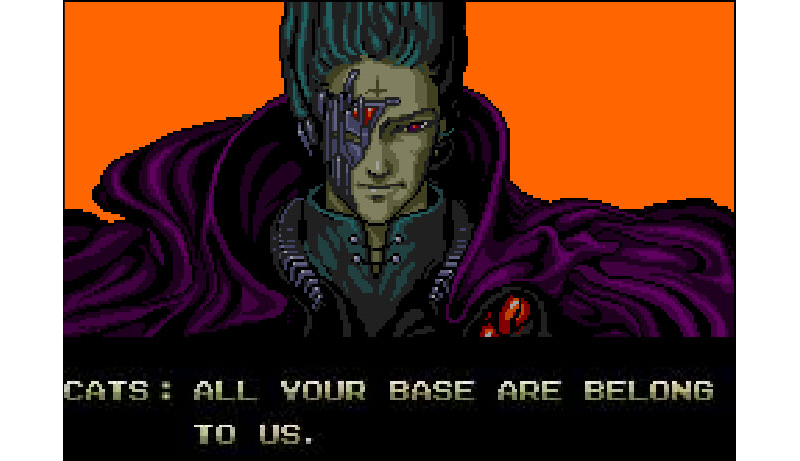
While the right translation from Japanese to English would have been “All of your bases are now under our control”, this is the perfect example of poor translation and grammar. The phrase became viral in 2000 and generated various memes and animations.
At the same time, another team will start to work on the non-texts elements that are important for localization, such as background, color schemes, the characters’ clothing (that can have a different cultural meaning than the original ones), and so on.
For example, when the World Of Warcraft was adapted for the Chinese market, the local publisher in China decided to remove any reference to the skeletons and skulls, as they are a sign of bad luck in Chinese culture.
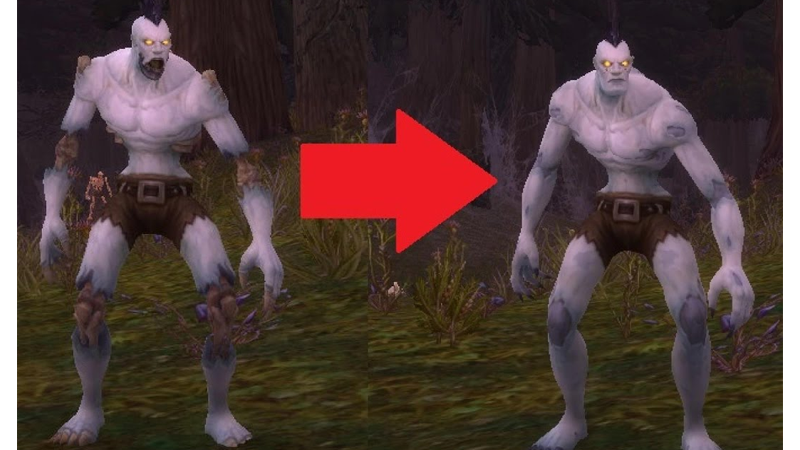
Localization Quality Assurance
As part of the video game localization process, checking the quality of the translation is extremely important. That’s why the translation of the text is made by one team of translators, while proofreading and editing are made by a different team.
This way, a pair of fresh eyes can see and correct the spelling, grammatical and other linguistic issues that are unnoticed and it’s the best way to assure high-quality translation services. Being about game localization, it’s also important to keep the context of the game in mind.
In this stage, a team of reviewers will also inspect the UI/UX interface to judge usability and run compliance and functional tests to see if all elements fit properly together.
Integrate everything into your game
Once everything is edited, verified, and approved, the next step is to pull everything together. In this stage, be prepared to slightly tweak the code to be sure the updated visual elements merge with the translated copy.
Then check and triple check to ensure that every element and function of the localized version work as smoothly as in the original game.
Need a video game localization partner?
Video game localization can be easy or hard, depending on the size of the game. However, it requires a specific blend of tools and know-how that can’t be so easy to meet. That’s why many game developers prefer to partner with agencies that can handle the whole process of transcreation for them.
Seasoned translation and localization agencies will provide you not just with experts in video game translation and localization but will also act as a one-stop-shop or at least as a point of contact for all other additional services, such as voiceover, graphic design, animation, coding, project management, customer service, and community management or globalized games marketing.
If you are a game developer who wants to make his game ready for international success, just contact us.
We’ll be happy to discuss how you can reach an international audience using video game localization.

